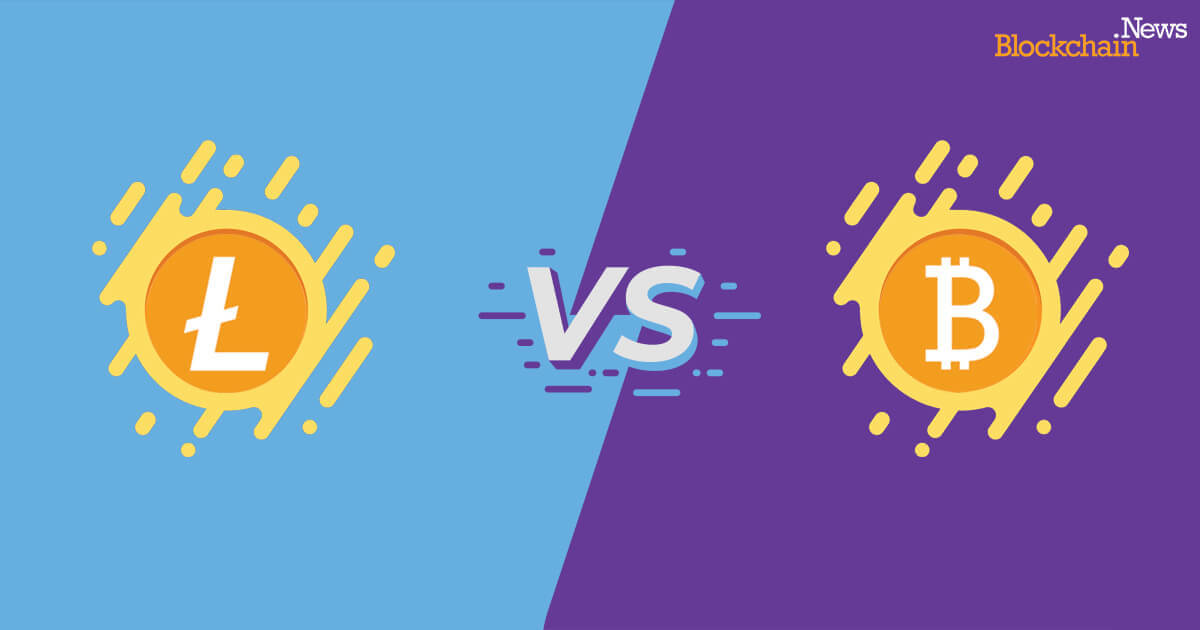Litecoin vs Bitcoin: Understanding Litecoin by Comparison with Bitcoin
Litecoin was created by Charlie Lee on Oct. 7, 2011, with its codebase is a fork from Bitcoin. In contrary from hard fork and soft fork, this type "fork" doesn't share the transaction history of Bitcoin and it had its own transactions beginning from its genesis block.

Litecoin was created by Charlie Lee on Oct. 7, 2011, with its codebase is a fork from Bitcoin. In contrary to the hard fork and soft fork, this type "fork" doesn't share the transaction history of Bitcoin, and it had its own transactions beginning from its genesis block.
Litecoin shares some common features with Bitcoin, including its open-source and decentralized nature. Litecoin's distinctive features from Bitcoin are that it has (1) faster transaction confirmation times (2) improved storage efficiency. With "substantial industry support, trade volume and liquidity" brought by these features, Litecoin poses its stance as "a proven medium of commerce complementary to Bitcoin." Litecoin is described as "being the Silver to Bitcoin’s Gold— translating in larger supply, quicker block times and lower transaction fees than Bitcoin," by the official Litecoin Foundation.
Let's take a look at the key differences between Litecoin and Bitcoin.
(1) Founder's influence
Bitcoin was created by Satoshi Nakamoto, who disappeared from the public. As time passed, it seems the founder's influence is also decentralized, as his identity was never verified. The creator of Litecoin is Charlie Lee, who is still active and quite influential in the blockchain and cryptocurrency industry.
(2) Block time.
In Bitcoin's network, a new block is created on average in about 10 minutes. In the Litecoin network, it takes only 2.5 minutes for new block creation.
According to Satoshi, the average block time of 10 minutes seemed to be a sufficiently safe time lag between two blocks to maintain the security of the whole Bitcoin network. Choosing a shorter block time and a larger block size would not become an advantage, since there would be other aspects being sacrificed, such as the increased bandwidth requirement.
In this view, it hardly says "higher transaction volume" brought by a shorter block time is a breakthrough in technology; instead, it is merely a design choice by the creator of the blockchain.
(3) Block reward
Both Bitcoin and Litecoin block rewards would experience halving every four years. Roughly, Bitcoin's blocks reward halves every 21,000 blocks while Litecoin block reward halves around every 84,000 blocks.
(4) Proof of Work (PoW) algorithm
Bitcoin uses the SHA-256 PoW algorithm, while Litecoin uses the Scrypt PoW algorithm. Scrypt was invented by Colin Percival, while Litecoin is one of the first cryptocurrencies to adopt the algorithm. Scrypt has claimed to be ASCI resistant due to its memory intensive feature.
However, there have been different sides to the claim. On Litecoin Foundation's website, it claims, "Litecoin has never aimed to become the ultimate store of value like Gold in this case. Its premise of being the Silver to Bitcoin’s Gold allows it to focus on becoming a more effective medium of exchange that complements Bitcoin’s ultimate store of the value proposition. This was the main reason why Litecoin adopted Scrypt mining so that it does not compete with Bitcoin mining, which uses SHA256."
(5) Supply Limit
In theory, the supply cap of Bitcoin is 21 million. Litecoin has 84 million in supply.
(6) Smallest Unit
Both cryptocurrencies fit 1 unit coin = 100000000 smallest unit. The symbol of the smallest unit of Bitcoin is Satoshi, to memory the name of Bitcoin founder. The symbol of the smallest unit Litecoin is Litoshi.
Image source: Shutterstock


